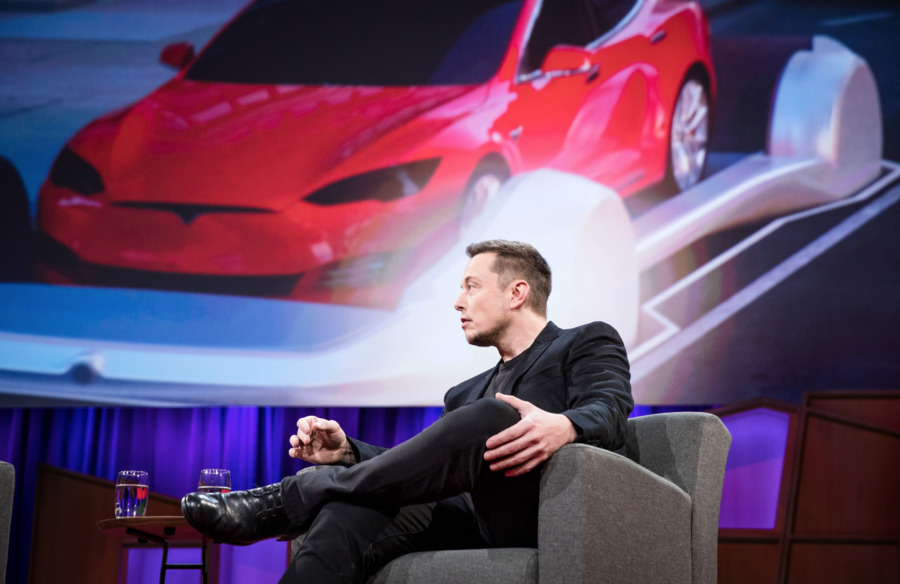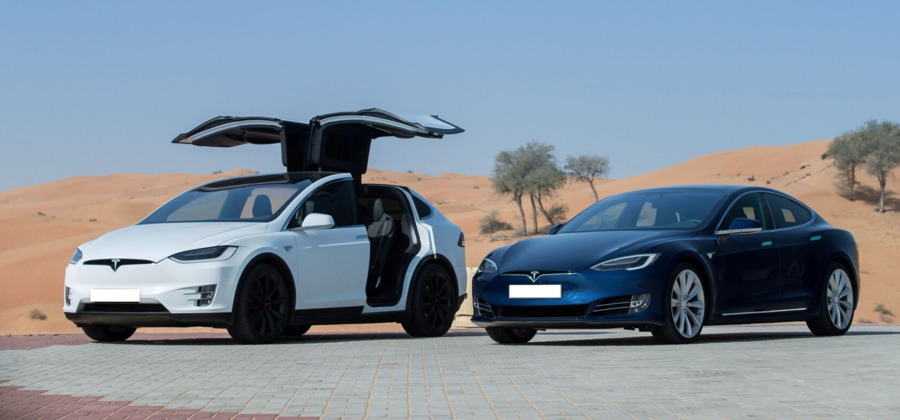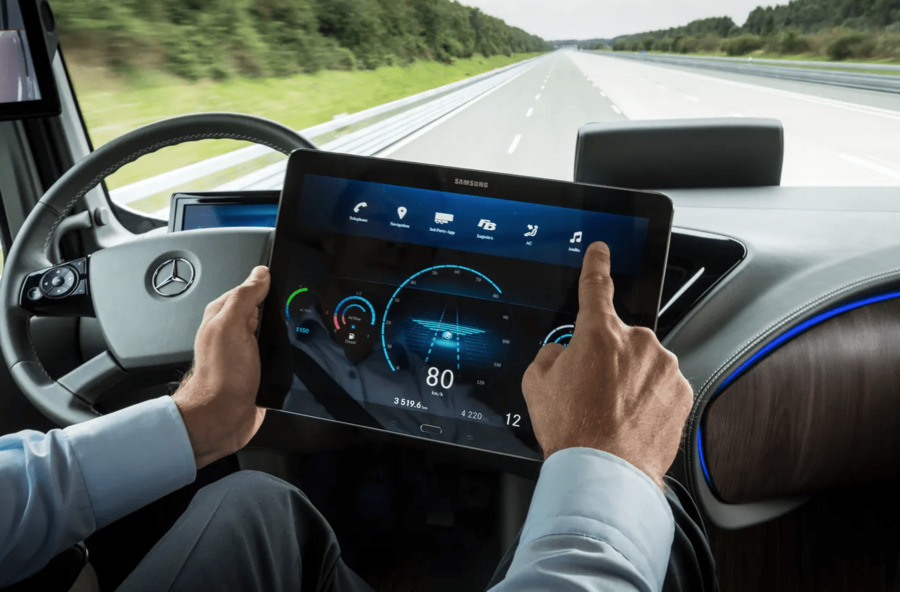Tesla, Inc. has revolutionized the automotive industry with its innovative approach to electric vehicle (EV) manufacturing and sustainable energy solutions. Founded in 2003, Tesla has not only challenged the traditional automotive industry but has also made significant strides in promoting ecological sustainability through advanced technology. This detailed article explores Tesla’s history, its significant impact on automotive and energy sectors, key innovations, and its diverse lineup of vehicles. It also examines how these innovations influence the rent of a car in the Dubai market, offering eco-friendly choices for those looking to rent a car in Dubai, thereby aligning with the city’s growing emphasis on sustainability.
The History of Tesla and Elon Musk’s Role
History and Name Origin: Tesla, Inc. was established in 2003 by Martin Eberhard and Marc Tarpenning in San Carlos, California. The company was named after Nikola Tesla, the renowned inventor and engineer known for his revolutionary work in electromagnetism. His contributions directly inspired the technology behind Tesla’s electric motors.
Elon Musk’s Influence: Although not a founder, Elon Musk became involved with Tesla early on, leading the company’s Series A funding round and joining as chairman of the board. Musk took an active role in Tesla’s product development and branding, eventually becoming CEO and product architect in 2008. His vision for a sustainable energy future has been a driving force behind the company’s innovations and rapid growth.

Innovations and Advantages of Tesla Electric Cars
Innovative Features
Minimalist Interior
Tesla’s interior design is notably minimalist, famously incorporating almost all vehicle controls into a single touchscreen interface. This design philosophy reduces clutter and enhances driver experience by merging functionality with sleek, modern aesthetics.
Over-the-Air Software Updates
Tesla vehicles improve over time with over-the-air software updates. These updates enhance vehicle functionalities, from improved battery management to enhanced driving dynamics and new entertainment features.
Sentry Mode and Guard Mode
These security features use the car’s external cameras to monitor surroundings when the owner is away. Sentry Mode alerts owners to potential threats, while Guard Mode records incidents, providing an added layer of security.
Semi-Autonomous and Full Self-Driving Capabilities
Tesla has been a leader in developing autonomous driving technologies. Its Autopilot and Full Self-Driving capabilities allow the vehicle to navigate with minimal human intervention, though full autonomy is still under development.
Bioweapon Defense Mode
Available in some models, this feature uses a HEPA filtration system to provide clean air inside the cabin, even in hazardous environments.
Supercharger Network
Tesla has built an extensive network of fast-charging stations, known as Superchargers, allowing Tesla drivers to quickly and conveniently charge their vehicles on long trips.
Powerwall
A product extension beyond vehicles, Tesla’s Powerwall is a home battery system that stores solar energy for residential use, emergency backup, and load-shifting to optimize energy consumption.
Tesla’s Impact on Ecology
Tesla’s commitment to sustainability has catalyzed a significant shift in the automotive industry towards electric vehicles. By proving that EVs can be desirable and practical, Tesla has spurred major automakers worldwide to accelerate their own electric vehicle programs, thereby contributing to a reduction in carbon emissions.
Tesla’s Vehicle Lineup
The Tesla Roadster (2008-2012) was Tesla Motors’ inaugural vehicle, establishing itself as a groundbreaking all-electric sports car that effectively challenged and changed the conventional views of electric vehicles (EVs). Here are the key points about this revolutionary model:
Development and Design
The Tesla Roadster was built on a modified chassis of a Lotus Elise, adapted to support an electric powertrain. It featured a lightweight carbon fiber body which contributed to both its performance and efficiency, embodying a sleek and sporty design that appealed to sports car enthusiasts.
Performance
Powered by a 3-phase, 4-pole AC induction motor, the Roadster produced 248 horsepower, with the Sport version boosting up to 288 horsepower. It boasted an acceleration from 0 to 60 mph in less than 4 seconds, rivaling traditional gasoline sports cars.
The Roadster introduced a high-capacity lithium-ion battery pack that delivered an impressive range of over 240 miles per charge, addressing common concerns about electric vehicle range limitations. The Tesla Model S, launched in 2012, has dramatically reshaped the landscape of electric vehicles (EVs) by merging luxury, performance, and exceptional range. Here are the key highlights about this influential luxury sedan:
Development and Concept
Designed from scratch as an electric vehicle, the Model S aimed to match or exceed the features of high-end conventional cars in luxury, performance, and usability without the typical compromises associated with EVs.
Design and Features
The Model S boasts a sleek, aerodynamic design that enhances its efficiency and quiet operation. Its spacious interior is marked by a minimalist approach centered around a large touchscreen interface that controls most vehicle functions.
Performance and Technology
Known for its robust performance, the Model S’s range has evolved from about 265 miles to over 400 miles per charge in recent models, making it one of the longest-range EVs available. It features advanced battery technology that supports faster charging and robust performance, including versions like the Model S Plaid, which can accelerate from 0 to 60 mph in under 2 seconds.
Tesla Model X (2014)
The Tesla Model X, launched in 2014, is a groundbreaking all-electric luxury SUV known for its innovative falcon-wing doors and high performance. Key features include:
Design and Utility
Recognizable for its unique doors, the Model X offers a spacious, minimalist interior that can seat up to seven adults.
Performance
With configurations like the Performance model, it accelerates from 0 to 60 mph in just 2.6 seconds and includes all-wheel drive and an advanced air suspension system.
Range and Charging
It delivers over 300 miles per charge, supported by Tesla’s Supercharger network.
Tesla Model 3 (2017)
The Tesla Model 3, introduced in 2017, is an all-electric sedan that has become one of the best-selling electric cars globally due to its affordability and high performance. Here are the key points about this influential vehicle:
Affordability and Accessibility
Positioned as Tesla’s most affordable model, the Model 3 aims to make electric vehicle ownership accessible to a broader audience.
Performance
It offers robust performance with quick acceleration—capable of going from 0 to 60 mph in as little as 3.1 seconds in the Performance variant.
Range
The Model 3 boasts a long range, capable of traveling between 263 to 353 miles on a single charge, depending on the model.
Tesla Model Y (2020)
The Tesla Model Y, launched in 2020, is a compact all-electric SUV built on the same platform as the popular Model 3. It combines many of the Model 3’s features with the advantages of a larger SUV design. Here are the key points about this vehicle:
Platform and Design
Sharing its underpinnings with the Model 3, the Model Y offers a similar driving experience but adds more interior space and utility, typical of SUVs.
Performance
The Model Y provides strong performance, with acceleration from 0 to 60 mph in as little as 3.5 seconds for the Performance model.
Range
It boasts a substantial electric range, capable of traveling up to 326 miles on a single charge, making it competitive in its segment.
Tesla Cybertruck (2022)
The Tesla Cybertruck, slated for release in 2022, is Tesla’s innovative foray into the electric pickup truck market. It stands out with its distinctive, futuristic appearance and strong performance credentials. Here are the key points about this vehicle:
Design
The Cybertruck features a unique, angular design made from a stainless-steel exoskeleton, which Tesla claims is nearly impenetrable, offering durability and passenger protection unlike any other vehicle in its class.
Performance
It promises impressive performance with options for single, dual, or tri-motor setups. The top model is expected to accelerate from 0 to 60 mph in under 2.9 seconds and offer substantial towing capacity.
Utility
Designed to be highly functional as a utility vehicle, it includes features such as a large cargo area with a sliding cover, adaptable air suspension, and versatile interior space.
Range
The Cybertruck is projected to have a range of up to 500 miles on a single charge in its highest spec version, making it suitable for both everyday tasks and longer trips.
Tesla Semi (2023)
The Tesla Semi, projected for release in 2023, is an all-electric semi-truck designed to revolutionize the heavy transportation industry by reducing both operating costs and environmental impact. Here are the key points about this innovative vehicle:
Economic and Environmental Efficiency
The Tesla Semi aims to drastically lower cargo transportation costs and carbon emissions, aligning with global efforts to increase sustainability in freight industries.
Performance
Promising high performance, the Tesla Semi is expected to accelerate from 0 to 60 mph in about 20 seconds, even when fully loaded, and can climb grades much more efficiently than traditional diesel trucks.
Range
Equipped with a high-capacity battery, the Semi is designed to travel up to 500 miles on a single charge at highway speeds, making it suitable for the majority of regional hauling routes
Tesla Cyberquad (2023)
All-electric off-road (ATV) ATV. Conceptually and commercially ready for production. Not produced until Cybertruck sales start. In the pickup truck’s kung installed mounts for the ATV and its charging from the on-board traction battery.
100 kilometers – will travel on a fully charged battery;
112 km/h – speed limit;
2.9 seconds – acceleration to 100 km/h.
Not currently in production.

Experience Tesla in Dubai
In Dubai, Tesla’s appeal can be experienced firsthand with the Tesla Model X 2021 available for rent at Al Mizan Car Rental. This model combines space, power, and advanced technology, making it a prime choice for those looking to enjoy luxury electric driving. The rental costs are 7000 UAE dirhams per week or 1250 dirhams for a day, providing an accessible way to experience this cutting-edge technology.
Conclusion
Tesla’s approach to the automotive and energy industries has made it a significant player in driving forward the technological and ecological advancements. Its continued innovation in electric vehicles and energy solutions places Tesla at the forefront of the transition towards a more sustainable future, influencing global trends and inspiring a shift towards greener technologies.
Tropical swift lover.
